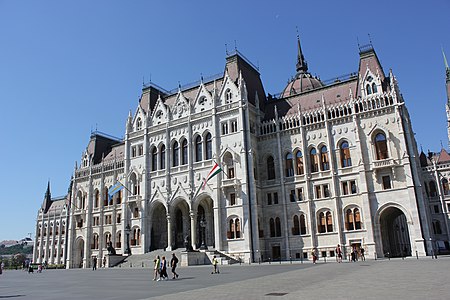Kossuth Square
National squaresSquares in Budapest

Kossuth Lajos Square (Hungarian: Kossuth Lajos tér), also known as Kossuth Square (Kossuth tér), is a city square situated in the Lipótváros neighbourhood of Budapest, Hungary, on the bank of the Danube. Its most notable landmark is the Hungarian Parliament Building (Országház). There is a station of the M2 (East-West) line of the Budapest Metro on the square as well as a stop for the scenic Tram No. 2.
Excerpt from the Wikipedia article Kossuth Square (License: CC BY-SA 3.0, Authors, Images).Kossuth Square
Kossuth Lajos Square, Budapest Lipótváros
Geographical coordinates (GPS) Address Nearby Places Show on map
Geographical coordinates (GPS)
| Latitude | Longitude |
|---|---|
| N 47.506944444444 ° | E 19.047222222222 ° |
Address
Agrárminisztérium
Kossuth Lajos Square 11
1055 Budapest, Lipótváros
Hungary
Open on Google Maps











